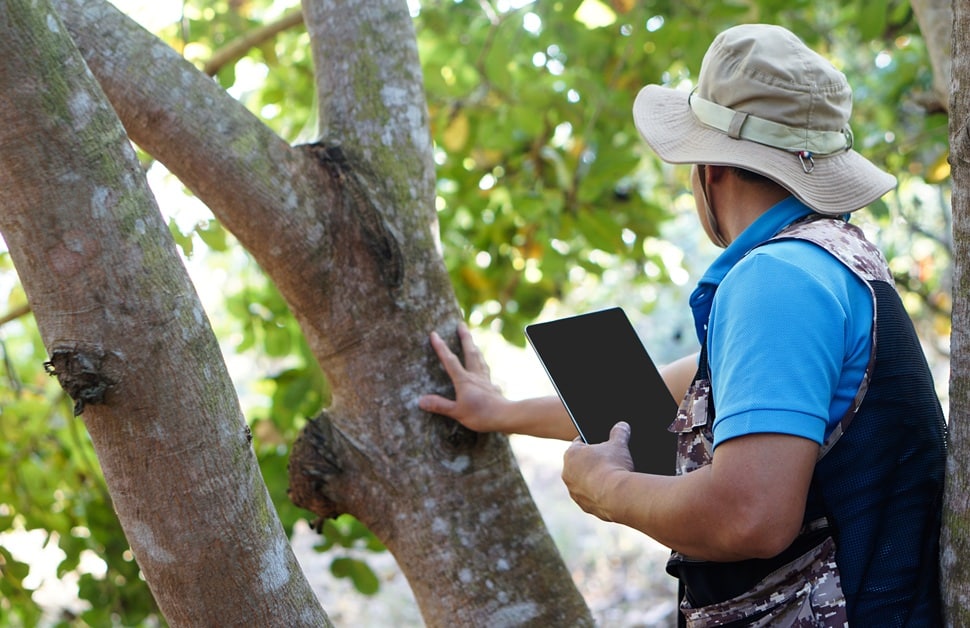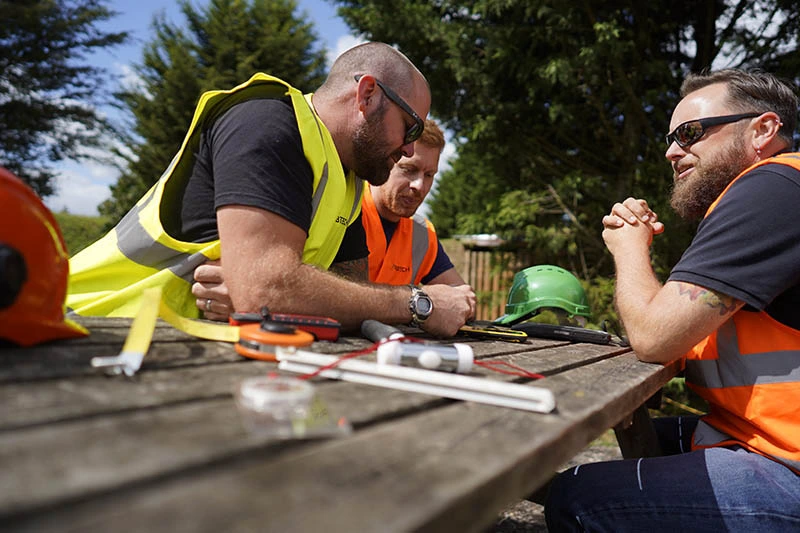
Tree Constraints Plan
At the point of submitting a planning application, one of the first things that the local council will check is how trees on or near the development site will be managed.
In the case of protected trees, the local authorities will be concerned that the development plans will not account for them, disregard their safety or damage them.
A tree constraints plan (TCP) explains how trees on the site will be addressed, overlaying survey data onto a site plan to map out all trees, root protection areas (RPAs) and canopy spreads.
With a TCP, a planning project’s design team can understand both the constraints and opportunities created by existing trees. Using mapping from the start of the process, the plans can work with the site’s natural assets instead of against them.
What is a Tree Constraints Plan?
A tree constraints plan (TCP) is a document created after an initial survey of trees to give designers and planners a realistic indication of how trees interact with proposed structures.
Information from the prior tree survey will be plotted onto a topographical survey map. A combined map of the site with the development plans can then act as an easy interpretation of both the restrictions and amenity value added by trees.
The contents of a TCP usually include crown spreads measured in the four cardinal compass points, details of retained trees that cannot be removed, rooting areas that need to be respected, the tree dimensions such as diameter and height, and tree quality categories (as dictated by BS5837:2012 regulations).
Benefits of a TCP
- Adds to Other Reports, such as Arboricultural Impact Assessments
- Guides Tree Management Strategies
- Highlights Constraints Caused by RPAs or Canopies
- Improves Planning Permission Prospects by Factoring in Arboricultural Features
- Offers a Realistic Intimation of Available Space Whilst Taking Important Trees into Account
- Supports the Design Team by Mapping out the Development Site
Implementation of Tree Constraints Plans
More often than not, a TCP will be needed early in the planning process, setting out the tree constraints before final layouts are confirmed and helping the designers in your team to work confidently and within realistic parameters.
For instance, in a small residential scheme, the plan could outline how retained trees with high amenity value can become central landscape features. Likewise, in a large development site, the plan could reveal where ground constraints affect infrastructure like access roads or drainage systems.
Process for Creating a Plan
- Initial Survey – recording tree dimensions, tree health, tree quality and tree species
- Transfer to CAD Format – converting results from data to digital drawings
- Overlay – plotting canopies, root protection areas and tree positions directly onto a topographical map
- Review – analysing the drawing to identify any constraints caused by trees
- Advice – submitting recommendations for layout adjustments and tree management
- Delivery – receiving the completed TCP in both CAD and PDF formats
Necessary Tools and Equipment
- BS5837 Category Templates
- CAD Software
- Camera
- Clinometer or Laser Hypsometer
- Compass
- Diameter Tape (DBH tape)
- Field Tablet or Notebook
- GIS Software
- GPS or Total Station
- Laser Rangefinder
- Personal Protective Equipment (PPE)

Speak to Tree Constraints Plan Experts
A tree constraint plan accompanies most development projects where trees are present, and it builds directly on the results from BS5837 tree surveys.
By combining BS5837 tree survey data with a topographical site survey, the consultants at Arbtech can show exactly how trees pose opportunities and limitations in your design.
In our time, we’ve supported numerous clients, not only through creating tree constraints plans, but also other arboricultural services, from preconstruction feasibility surveys (PFS) to BS5837 tree surveys, arboricultural method statements to arboricultural impact assessments, and more.
We can also create a tree protection plan (TPP) once the design has been finalised. TPPs help with setting out practical measures for protecting trees during the development process. Most planning projects will need both a tree protection plan and a tree constraints plan as part of the application for planning permission.
Tree Constraints Plan Cost
As with all of the tree services we offer, the cost of a tree constraints plan depends on the scale of your project, the size of your site, and the number of trees present.
We start with a baseline fee before adjusting it based on the site size, complexity and tree numbers, ensuring that the final price is fair and accurate.
For a free quote using the dimensions and circumstances of your development site and planning project, contact our team and give us as much information as possible.
Tree Constraints Plan Consultants
Our team is highly experienced, both when it comes to arboriculture and development planning.
Instead of just drawing up the plan, we also interpret it for you and make sure that your architects and wider design team can act on our findings and advice.
Following decades of combined expertise, our arboricultural consultants ensure that your TCP does everything possible to remove concerns and get your development moving forward.
Get a Tree Constraints Plan for Construction, Design or Demolition Work
If you’re preparing a planning application for the local planning authority, refining a housing layout or arranging demolition in a location near sensitive trees, a tree constraints plan will be essential.
With a TCP, you can prove to the planning officer from your local authority that you’ve understood all possible tree constraints from the outset and can guarantee that your design process runs smoothly.
When you’re at a point that you feel comfortable moving forward, contact us online, over the phone or via email. We will then send you a free quote, walk you through the next steps, and set up a date to begin helping you.


